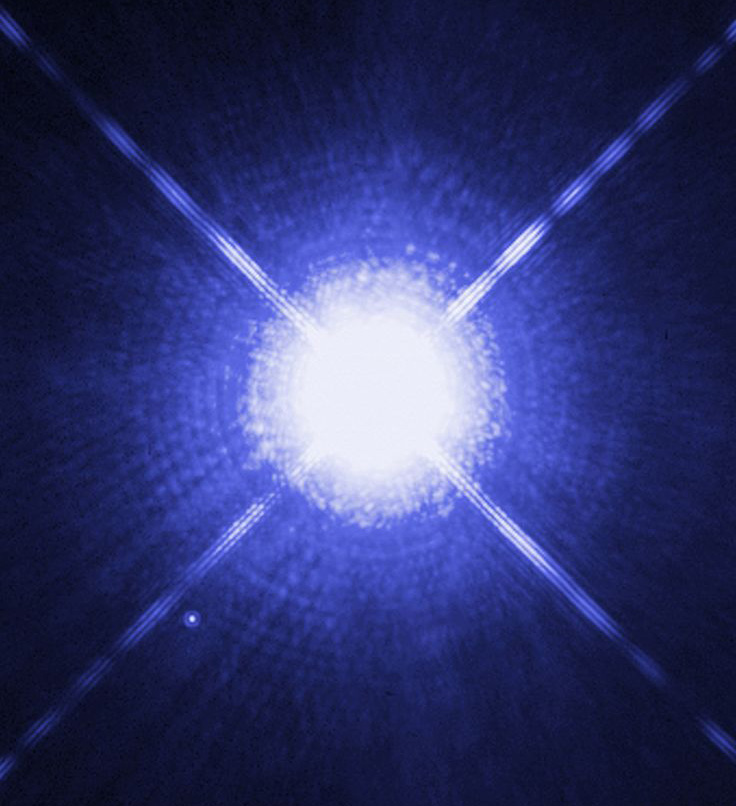

Observers on the Hale Telescope: December 26, 2017
Sergio Fajardo-Acosta
(Caltech/IPAC/JPL)
 Lying 8.6 light-years from Earth, Sirius A is the brightest star in the sky seen here with its faint companion, Sirius B, to the lower left. Sirius B is a white dwarf star with a mass nearly that of our Sun packed into a sphere not much bigger than the Earth. It has no heat source of its own. 120 million years ago, Sirius B consumed its resources and became a red giant before exploding and collapsing. The distance between the two varies from 8.2 to 31.5 astronomical units. (NASA/ESA/STScI) |
Derived from stored thermal energy, the light of a white dwarf star originates in its upper atmosphere. Though the star is made of carbon and oxygen, its spectrum typically shows absorption lines only of hydrogen and helium. Heavier elements do not appear because they quickly fall into the center drawn in by the white dwarf's deep gravity well. Even so, Fajardo-Acosta has found many white dwarf stars that display magnesium and other heavy elements in their spectra. Tonight he will use the Double Spectrograph to determine whether this material comes from nearby companion stars or from the interstellar medium. |

